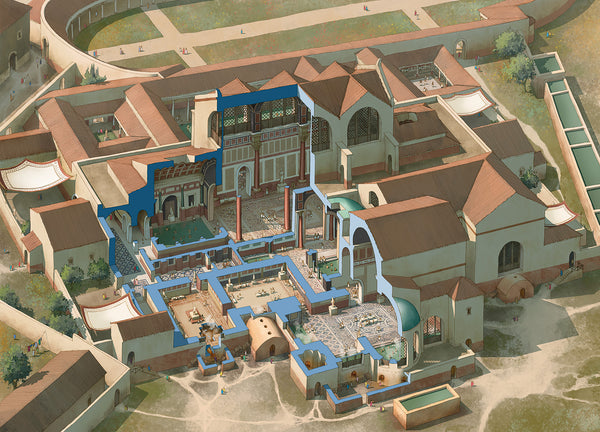Like a Hole in the Head: Skull Surgery in Ancient Greece
By Danièle Cybulskie
The Hippocratic writers are probably best known for their famous Oath, but they were also responsible for a lot of firsts in medical literature. One of these, both fascinating and stomach-turning, is the first known work on treating head wounds, aptly titled “On injuries of the head”. It solidifies an ancient practice: the removal of part of the skull, or trepanation.

Trepanated skull of a 50-year old woman, found in tumb 3 Corseaux-En Seyton. Cicatrisation of the bones indicate the patient survived. Photo by Rama / Wikimedia Commons
Archaeological evidence suggests that trepanation is a prehistoric, worldwide practice which most likely peaked in the Neolithic era (Roberts & Manchester, 125). Although it seems unlikely, the survival rate – deduced by signs of healing in the bones of the skull – was pretty high, all things considered. A study of Peruvian skulls suggested a success rate of over 50% (126). In Greece, the first healed, trepanned skull from the post-Hippocratic period was discovered on the island of Chios in 2003 (Tsermoulas, Aidonis & Flint, 329).
Trepanation is a tricky business, if you want your patient to survive. The hole in the skull must be made in such a way that it cuts through the bone, but not the brain’s protective membranes. To accomplish this, surgeons would scrape, gouge, saw, or drill into the bone using a variety of tools (Roberts & Manchester, 125-126). This type of surgery is actually named for a circular, drill-like tool: a trepan. As the Hippocratic author notes, it takes some work to cut through the skull with a trepan, and the trepan can get very hot from the friction. If that happens, it’s necessary to dip it in some water to cool it down before continuing (Part 21). He warns against trepanning over any of the skull sutures, though, in case of slicing into a vein or artery. In some surgeries, a large piece of skull was removed and then replaced. In that case, the author says, it is important to get the exposed part of the brain “clean and dry as quickly as possible” (Part 15).
In addition to being a delicate operation – not to mention painful – trepanation was risky. So why perform the surgery at all? Mainly, it seems, the holes were created to relieve pressure on the brain caused by swelling, excess fluid, or a depressed skull fracture (Tsermoulas, Aidonis & Flint, 331; Roberts & Manchester, 127). Interestingly, one pre-Hippocratic example suggests trepanation was possibly a treatment for a sinus infection (127-128). The Hippocratic author suggests trepanation is necessary for contusions, “fissures”, or “hedra” – dents made by weapons. If an untreated head wound is turning to fever, he says, trepanning must be undertaken immediately, although this doesn’t guarantee survival (Part 19). There must have been a noticeable benefit of trepanation for it to have outweighed the risk, although perhaps in some cases, it was just a last-ditch effort at saving the patient.
Modern medicine still occasionally requires cutting through the skull bones to relieve pressure or perform surgery, but – fortunately for us – the conditions are much more sterile and painless. Our modern surgeons call this “craniotomy”, and their tools are much safer and kinder (no more plunging a hot trepan into cool water). Still, it’s interesting to learn that this procedure was performed in ancient times, with a surprising survival rate, and to read the careful, detailed instructions of the Hippocratic author of “On injuries of the head”. You can read the treatise itself here, and you can learn more about ancient medicine in our upcoming Issue 12 of Ancient History Magazine: The Arts of Aesclepius.
Danièle Cybulskie is a guest editor for Issue 12. You can read more of her work at www.danielecybulskie.com

